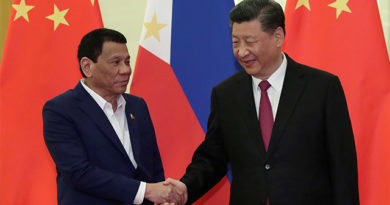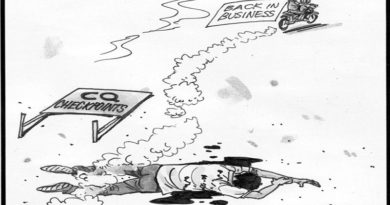Parliament House, Canberra: Aussie solons, int’l rights groups: Release De Lima
Sen. Leila De Lima.
(File photo by LYN RILLON / Philippine Daily Inquier)
.
In a speech delivered before the Australian parliament on Feb. 18, Chris Hayes of the Australian Labor Party called on the Australian government to “use all its diplomatic measures” in urging the Duterte administration to free De Lima from her detention cell at Camp Crame.
.
ADS by Cloud 9:
.
– SPACE RESERVE FOR YOUR ADVERTISEMENT –
.
.
Hayes, who visited the Philippines last year, said De Lima’s predicament was an offshoot of her scathing tirades against the President’s brutal drug war, which had led to the deaths of thousands of drug suspects, mostly small-time users and drug pushers.
.
ADS by Cloud 9:
.
– SPACE RESERVE FOR YOUR ADVERTISEMENT –
.
.
Circumventing the law
“The case of Senator De Lima is a clear example of what happens when a government seeks to circumvent the rule of law,” Hayes said in his speech, which was posted on the official website of the Australian parliament.
“Surely, an attack on human rights is an attack on our collective humanity. We must never remain silent when human rights are being attacked,” he told his fellow parliament members.
.
.
ADS by Cloud 9:
.
– SPACE RESERVE FOR YOUR ADVERTISEMENT –
.
.
‘Politically motivated’
International rights groups, including Human Rights Watch, Amnesty International and Forum-Asia, have also called on the government to release De Lima and drop all charges against her, saying they were all politically motivated.
De Lima, Mr. Duterte’s staunchest critic, had been locked up for nearly two years after she was indicted for her alleged involvement in the illegal drug trade when she was still the justice secretary during the previous Aquino administration.
Hayes noted that the Philippine government made use of “untested statements by convicted drug lords, police officers and prison officials” to bring De Lima behind bars.
According to Hayes, keeping mum on human rights violations would only encourage “those who seek to undermine the human rights principles, structure and democratic institutions that underpin our societies and allow for the creation of strong and inclusive communities.”
ADVERTISEMENT
“What we must appreciate is that, when the rule of law is being sidelined, we are going to see the curtailment of human rights as an inevitable result,” he said.
.
.
ADS by Cloud 9:
.
– SPACE RESERVE FOR YOUR ADVERTISEMENT –
.
.
Silencing dissenting voices
John Samuel, executive director of Forum-Asia, said in the statement that De Lima’s detention was proof of how far the Duterte administration would go to silence dissenting voices.
“The government’s fabricated charges against her only reflect how compromised its institutions have become under the present administration,” Samuel said.
De Lima was arrested on Feb. 24, 2017, based solely on the testimonies of convicted drug lords.
During her tenure as chair of the Commission on Human Rights, De Lima also sought to investigate Davao’s ‘death squads.’
.
.
ADS by Cloud 9:
.
– SPACE RESERVE FOR YOUR ADVERTISEMENT –
.
.
‘Arbitrary detention’
Nicholas Bequelin, Amnesty International’s regional director for East and Southeast Asia and the Pacific, said that De Lima should be released, since she was detained solely for her criticism of the sitting administration.
“As one of the only leaders bold enough to oppose Duterte’s murderous ‘war on drugs,’ she has faced prolonged arbitrary detention,” Bequelin said, adding that De Lima’s detention is a “blatant attempt” to silence her.
By: Marlon Ramos, Patricia Denise M. Chiu – @inquirerdotnet
.
ADS by Cloud 9:
.
– SPACE RESERVE FOR YOUR ADVERTISEMENT –
.
.
TRIVIA:
Parliament of Australia
|
Parliament of Australia
|
|
|---|---|
| 45th Parliament | |
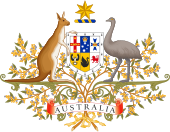 |
|
| Type | |
| Type | |
| Houses | Senate House of Representatives |
| History | |
| Founded | 9 May 1901 |
| Leadership | |
|
Elizabeth II
since 6 February 1952 |
|
|
Peter Cosgrove
since 28 March 2014 |
|
| Structure | |
| Seats | 226 (150 MPs, 76 Senators) |
 |
|
|
House of Representativespolitical groups
|
Government (73) Coalition Liberal (43) LNP (21)[a] National (9) Opposition (69) Crossbench (8) |
 |
|
|
Senate political groups
|
Government (31) Coalition Liberal (25)[d] National (6)[e] Opposition (26) Crossbench (19) |
| Elections | |
| Instant-runoff voting | |
| Single transferable vote | |
|
House of Representativeslast election
|
2 July 2016 |
|
Senate last election
|
2 July 2016 (full) |
| Meeting place | |
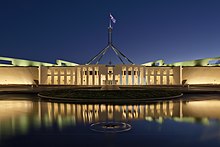 |
|
| Parliament House Canberra, Australian Capital Territory Australia |
|
| Website | |
| aph |
|
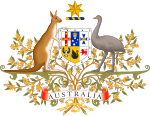 |
|---|
| This article is part of a series on the politics and government of Australia |
The Parliament of Australia (also known as the Commonwealth Parliament or just Parliament) is the legislative branch of the government of Australia. It consists of three elements: the Crown (represented by the Governor-General), the Senate and the House of Representatives.[3][4] The combination of two elected chambers, in which the members of the Senate represent the states and territories while the members of the House represent electoral divisions according to population, is modelled on the United States Congress. Through both chambers, however, there is a fused executive, drawn from the Westminster system.[5]
The upper house, the Senate, consists of 76 members: twelve for each state, and two each for the Northern Territory (including Christmas Island and the Cocos (Keeling) Islands) and the Australian Capital Territory (including Norfolk Island and the Jervis Bay Territory). Senators are elected using the single transferable vote proportional representation system and as a result, the chamber features a multitude of parties vying for power.[6] The governing party or coalition has not held a majority in the Senate since 1981 (except between 2005–2008) and usually needs to negotiate with other parties and Independents to get legislation passed.[7]
The lower house, the House of Representatives, currently consists of 150 members, each elected using full-preference instant-runoff voting from single-member constituencies known as electoral divisions (and commonly referred to as “electorates” or “seats”).[8][9] This tends to lead to the chamber being dominated by two major political groups, the centre-right Coalition (consisting of the Liberal and National Parties) and the centre-left Labor Party. The government of the day must achieve the confidence of this House in order to gain and remain in power.
Although elections can be called early, every three years the full House of Representatives and half of the Senate is dissolved and goes up for reelection. A deadlock-breaking mechanism known as a double dissolution can be used to dissolve the full Senate as well as the House in the event that the Upper House twice refuses to pass a piece of legislation passed by the Lower House.[10]
The two Houses meet in separate chambers of Parliament House (except in a rare joint sitting) on Capital Hill in Canberra, Australian Capital Territory
.
.
.

All photographs, news, editorials, opinions, information, data, others have been taken from the Internet..aseanews.net | [email protected] / For comments, Email to : Aseanews.net







